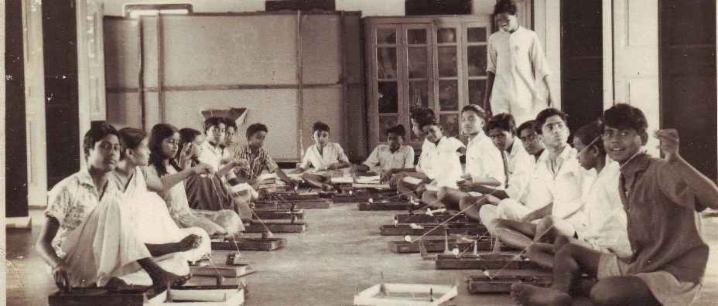In “Hind Swaraj” in 1908 Gandhiji pointed out four defects of prevailing educational policy in India, that, “it does not make men of us; it is not for the millions; it is mainly false education and it has enslaved us”. Since then he has been reflecting upon what should be correct educational policy for the country. In 1937 he invited eminent educationist of the country, both his followers and bitter critics, – to meet at Wardha and debate the issue. They met on 22nd and 23rd October 1937. The conference becomes famous as Wardha Conference. Here Gandhiji put his proposal for radical orientation of educational policy in India. At the end of the conference a committee was constituted under the presidency of Dr. Zakir Hussian, known as Zakir Hussian Committee, to concretize the theory and practice of the proposed policy. Out of the Wardha debate and deliberation of Dr. Zakir Husssian committee ‘there emerged a body of theory and practice of education known as Nai Talim or Basic Education (Buniyadi Shiksha).” In February, 1938 at Haripura Session of Indian National Congress, presided by Subhash Chandra Bose, a resolution in support of the new policy was adopted Provincial Congress government then in office in several provinces accepted Gandhiji’s scheme of Nai Talim for implementation.
![student_learning_under_tree[1]](http://ww2.mnbei.org/wp-content/uploads/2016/01/student_learning_under_tree1.jpg)
Ashram – learning with the nature
In 1940, immediately after these developments, Majhihira National Basic Educational Institution (MNBEI) was founded by some young energetic Congress workers for spreading the idea of Basic Education and development of rural India.
![_wsb_728x281_Majhira-past[1]](http://ww2.mnbei.org/wp-content/uploads/2016/01/wsb_728x281_Majhira-past1.jpg)
1975 – Ashram during the time of crisis
Majhihira was a remote and poor village in Manbhum region of Bihar (after the reorganization of states in 1956 it came under the newly created Purulia district of West Bengal). It had no electricity, no primary school, no health center and no all weather road to connect it to nearest rail or road head. The land was barren and rocky where little agriculture was practiced. Shri Chittabhushan Dasgupta, the founder of the Institution and the youngest son of Rishi Nibaran Chandra Dasgupta, organizer of the freedom movement in Manbhum and close associate of Mahatma Gandhi, after completing training at Government Basic Training College, Patna in 1939, resolved to devote himself to the task of spreading education among the uneducated practicing the principles of Nai-Talim. In the rural interior of Manbhum Majhihira was chosen because of its remoteness, poor economic conditions, social isolation and administration’s neglect and apathy towards the area. It was thought that if the practice of Buniyadi – Siksha (Basic Education) could be successful in such a neglected, remote and resource less area, Basic Education would be a success in whole of the country. Since 1940 MNBEI is relentlessly pursuing the practice of Basic Education. It had moments of crisis as well as of introspection. In the first phase of “beginning and experimentation” (1940-1947) it had to face a grave situation. In the 1942 Quit India movement the Institution was declared “unlawful” by the British government, and was closed down. The workers of the Institution were imprisoned. Even the school building, constructed with local help, was demolished. In 1946 the interim Congress Government returned the confiscated property to the Institution and gave compensation for the loss suffered.
While evaluating the work being done by MNBEI, Dr D. K. Mukhopadhyay of Vinaya Bhavan, Shantiniketan, wrote in his report,
“MNBEI is doing a commendable job for spreading universal education in and around Majhihira village and thus playing a crucial role in the national goal of achieving universalisation of elementary education”.
Students with Charka – 1965


One Reply to “About Ashram”
Comments are closed.